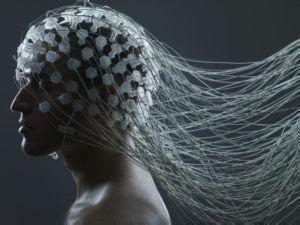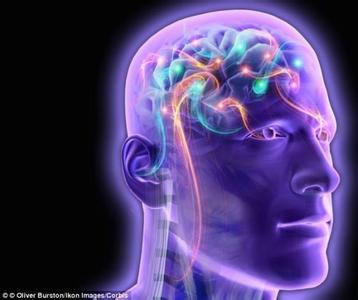-
Paper Information
- Paper Submission
-
Journal Information
- About This Journal
- Editorial Board
- Current Issue
- Archive
- Author Guidelines
- Contact Us
International Journal of Brain and Cognitive Sciences
p-ISSN: 2163-1840 e-ISSN: 2163-1867
2014; 3(2): 35-38
doi:10.5923/j.ijbcs.20140302.01
The Working Principle of Brain-to-Brain Interface (BBI)
Liang Xi Feng
Department of Physics, Qingdao Technological University
Correspondence to: Liang Xi Feng , Department of Physics, Qingdao Technological University.
| Email: |  |
Copyright © 2014 Scientific & Academic Publishing. All Rights Reserved.
A brain-to-brain interface enables sharing of information among animals. However, how it works hasn’t been explained. A brain is like an electronic component. We may search the answer how BBI works using our knowledge of electronic component. This article is aimed to put forward a theory of how BBI works.
Keywords: Brain-to-brain interface, Electronic component, Transfer
Cite this paper: Liang Xi Feng , The Working Principle of Brain-to-Brain Interface (BBI), International Journal of Brain and Cognitive Sciences, Vol. 3 No. 2, 2014, pp. 35-38. doi: 10.5923/j.ijbcs.20140302.01.
Article Outline
1. Introduction
- Exchange of information has been proved possible between animals, for example, Miguel Pais-Vieira and others confirmed the possibility of sharing of information between an encoder rat and a decoder [1]. It also been proved between man and animals by researchers from Harvard [2]. It also proved by researchers that BBI is also possible between men. And we can see that nearly all BBI experiments are actually conducted in awake animals that could behave implanted with cortical microelectrode arrays capable of not only neuronal ensemble recordings but intracortical microstimulation [3]. Apart from them, we have brain-machine interfaces (BMIs), which allows brain-derived information to control artificial actuators and communite the subject’s motor intention to the world outside its body even without the interference of the subject’s body. [4] Over the past twenty years, it has been shown by many studies how brain-derived motor signals can used to control the movements of varieties of mechanical, electronic and virtual external devices. [5-7] Future developments of brain-machine interface are discussed [8] and from it we can see where the technology can go. The transmission of the brain’s information is discussed [9] and how neurons control the movement of the body is discussed in detail [10]. They are all preparing work of BBI.Now we put forward a theory to explain the working principle of the brain-to-brain interface. The theory is based on matters’ interaction, and we can see that although the brain-to-brain interface involves controlling the brain of one animal, it actually doesn’t involve the thinking process directly. And in the explanation, we compare the brain as a electronic component, which is kind of different from the computer, as it is without the insulated outermost shell. And the theory itself can also be used in the explanation of many other activities of brains, such as the brain-machine interfaces.
2. The Comparison of a Brain and a Computer
- In some view we can safely say that a brain is an advanced computer. They have too much in common. On the whole, the brain and the computer are all composed of different parts that separately exist but interact with each other. For example, the computer has the hardware dealing with the images of camera, and the brain has visual cortex. Now we can see the process they process the information. The visual information is transmitted from light to electrical signals within the eyes and transmitted through various nuclei to visual cortex and is perceived. The information is then stored in within the hippocampus or association cortices and men will remember the visual information. And the computer process is similar to it. The camera of the computer transmits the information of the light into electrical signals, which are translated by certain program and then stored by a hard-drive.The computer has sound card, and the brain has auditory cortex, etc. And the transmission process is similar to the eyes and the camera. And these parts are separated from each other but interact with each other. But that the parts in a brain interact with each other stronger and permeate more into each other. Now let’s see the similarities of a brain and a computer. Also, the signals the brain and the computer use to transfer information have something in common. The main form of the signals of the brain is the electrical signal, and the else is the chemical signal. And the facts show that nearly all the information of the brain’s activities can be shown in the electrical signal. By contrast, the signal of the brain is all in electric form. When the brain actives, the electric states of it change very sensitively, and certain activities are projected onto certain electric states. Thus, if we extract the specific electric states of the brain, we extract the activities of the brain. The thinking area of the brain is like CPU of the computer, which sends orders out and analyzes the information from outside world. Thus, the analyses above offer us the foundation to extract information of the brain’s activities out and store it into certain equipment. Like the computer, the control of the brain to the body consists of several processes. When the nerve centers send out information, it is transferred in several nerves one by one. And the information is stored in the electric current of the nerves. And we can see that the current is nothing special, except that it is much more complex than most of the current we see in daily life. When we use specific ways to change the electric current of the nerves, the information in it will change and so will the behavior it controls of the body. And thus, when we insert electrodes into the brain or the spinal cord, as long as it connects certain nerves that control specific areas of the body, the changes of electric current in the electrodes will influence the electric current of the nerves through the circuits of the electrodes and the nerves, thus influencing the behavior of the body, just like that when we input different electric current into the computer or the circuits of it, the computer will export differently. And so, it offers the foundation that we can influence the behavior of the body.
3. The Explanation of Brain-to-brain Interface
- The brain of one animal can be controlled by the other one to do some simple things. The connections between the two animals can be through electric wires, Internet, etc [1, 2]. But what’s the working way of it? We can simply analyze the process.1. The brain of the encoder animal has some changes, which order the body of the encoder animal to take certain actions. And it can easily be seen that whether the encoder animal takes the actions its brain orders successfully or not, its brain has the certain changes. The changes, aroused by the thinking areas of the brain, are in the form of electric charge. And the brain is like a complex electric net now, which transfers certain current to the certain nerves. And the nerves are all motor nerves in the experiments [1-3] researchers did.2. The states of the brain of the encoder animal are extracted by men as signals. And the signals can be extracted by electroencephalogram (EEG) [2], or by deep brain stimulation (DBS) [11]. The form way, EEG, uses the character that the influence of the brain’s electric activities can penetrate the skull and induce electric current in the electrodes; and the latter, DBS, causes the electrodes to insert into the circuits of nerves. When the signals are extracted, they are now not different from the signals we see in daily life in essence. And thus, we can store, amplify or transfer the signals, and we can transform them into other forms. For example, in some cases, the signals are transformed into the Internet signal and transferred to other places [2].
 | Figure 1. Lots of electrodes are put on the brain to extract information using EEG |
 | Figure 2. A man is receiving signals |
4. Discussion
- It can be seen that although the explanation above is about BBI, some of its contents can be used to explain other activities of the brain, such as BMIs [12-15]. In some BMIs, signals are extracted from the brain and specific signals are used to control certain behaviors of machines, like the artificial arms or legs. We can see that BBI and BMI have something in common in that if we regard the decoder animal as a complex machine, BBI can be regarded as a special kind of BMI. So if we know more about BMI, we can see how the brain interacts with outside equipment and know more about BBI. As talked above, it can be concluded that even though we get centrifugal nerves in the circuitry and transfer signals collected into it, without going through the brain or spinal cord, the body will act like it was shown in BBI researches. As a matter of fact, such researches have been done but that the signals used were simple currents but not signals collected from the brain or the spinal cord. And because of that, in the encoder animal, too much useless signals are extracted; in the decoder animal, too much extra signals are imputed and they cause interference. In this case, the successful rate will be decreased. Currently, as areas of the brain or spinal cord that control specific behaviors aren’t known accurately, too much electrodes are put into animals and that causes not only waste but harm to animals. And it’s obvious that the experiments now are mostly very short [1-3], [11]. By inserting electrodes into accurate areas, it’s expected that constant behavior control can be achieved. Studies on BBI and BMI are important. It can theoretically tell us how the brain works, making us know more about the brain. And that’s helpful for us to cure some brain or neuron diseases. Also, we can use the principle of them to help the disabled. If we produce very flexible artificial arms or legs controlled by brain, the disabled will behave like normal people. Furthermore, the technology can be used in normal people, with which they can control equipment outside their body. What it will be like that your phone will start automatically when you want it to start? Only by lying on the bed you can control your phone freely. We can imagine that by producing strong interaction between a man’s brain and equipment outside, and by getting them to interact with each other through electromagnetic waves, one is likely to control equipment faraway. Thus, the film Avatar can be achieved in real life. The prospect is very tempting.Up to now, our studies are primary and basic. We’ve just taken the first step. More studies are needed in this aspect. And we need more studies in this respect.
 Abstract
Abstract Reference
Reference Full-Text PDF
Full-Text PDF Full-text HTML
Full-text HTML